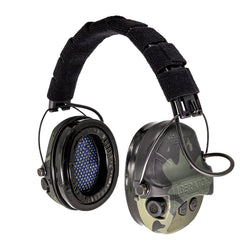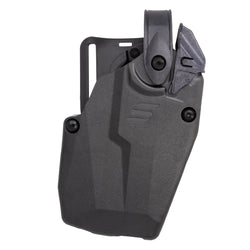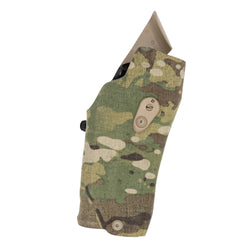In a previous installment of Vehicle Combatives, Safariland CADRE Rich Graham discussed the nuances of being forced to fight from the confines of a vehicle. The best option when confronted behind the wheel is to simply drive away. But if that’s impossible, your only choice is to fight. Remaining inside a vehicle keeps you stationary, so fighting from within should only be a means to get out.
In this installment, Rich discusses the tactics of fighting around a vehicle once the seatbelt comes off and you hit the dirt.
Take Cover
Vehicles are a transitional space. The windows and body panels that provide concealment on the inside also limit your view of targets outside. After exiting the vehicle, your first priority is to assess for any hidden threats nearby and then move to cover.
Cover is protection from enemy fire, whereas concealment is protection from enemy view. The two are not the same. Body panels and windows can make bullets do unexpected things, but they are unlikely to stop them from coming through toward you.
Avoid doors, trunks, and body panels, and prioritize where the engine, radiator, battery, and cooling system are located. While these more substantial and bullet-resistant components are often at the front of the vehicle, this is not always the case. The location of hard cover will vary depending on the vehicle—whether a Ford, a mid-engine Corvette, or a VW.

The drivetrain and axles offer the best protection, but Rich points out that they are not the only places to tuck in. The pillars where doors join the frame are hardened and can serve as cover, though they don’t have the best surface area.
Other than protection, cover needs to serve as a pivot between you and an assailant. You need not be right behind cover—in fact, being too close can obstruct your vision. Maintaining some distance from cover provides flexibility of movement and allows you to access in multiple directions. This is where the concept of dead space, and how it plays into cover and angles of cover, comes into play.
Dead Space
Dead space, or additional distance between you and your cover, has other advantages. It provides a better field of view and helps protect against ricochets and shrapnel. Deflections and near-misses tend to skip along the surface of the object struck, so if you’re crowding cover, it’s easier to get hit.

Deadspace has obvious advantages, but it can also keep you from getting a clear shot on target. It is tempting to crowd over cover, extend the handgun or rifle, and give fire. The sights and barrel are physically over the cover.
However, when you are a distance behind cover, that physical feedback is not there. You have to keep in mind that the offset between your sights and muzzle can be off by a few inches and what looks like a clean shot over a hood will simply be a waste of ammunition through the hood.
Angles of Cover

Dead space behind cover provides more safety, but it also gives you additional time to react—whether to identify threats and engage or to find a better position and escape. Crowding cover forces extra time to align your weapon and engage the target, whereas maintaining some distance allows you to keep your arms extended toward the target at all times.
This extra space not only improves peripheral vision for identifying threats, but also helps you assess and use angles of cover more effectively. By positioning yourself at an optimal angle, you can maximize protection while maintaining the ability to engage multiple threats or identify escape routes if you need to move from the cover of the vehicle.
Ultimately, cover is a means to an end, not an end in itself. Its purpose is to protect you while allowing you to deliver fire effectively. Once the immediate threat changes or ends, moving on becomes the next objective.









